Of Greek descent, Douglas
Diomedes Alexandra (ne Diomedes Alexandratos) was born in Shepparton on 6
February
1922. His paternal grandfather, Efstathios Alexandratos, was
a
ship's captain from Ithaca who migrated to Australia in the
1880s and settled in Bendigo. Alexandra's father Andreas
(1872-1950)
followed suit in 1901 and started his own business as a fruit vendor in
central Melbourne, which
enabled him to bring out his two brothers, and later his wife Sophia,
from Greece. Together, the
three men operated a successful cafe in Elizabeth Street until
1914, when the partnership ended. Andreas and Sophia then moved to
Shepparton, where they reputedly established the town's first
cafe.
Graduating from Caulfield Grammar in 1940, the young Diomedes Alexandratos worked in a land surveyor’s office and drafted plans for factories. In December 1941, the day after the Japanese bombed Pearl Harbor, he decided to join the RAAF. After training in Australia as an Air Gunner, he arrived in England in 1943 and became a mid-rear gunner in a seven man Lancaster bomber crew. In January 1944, Flying Officer Alexandratos was on his twelfth bombing mission, this time to a risky Lancaster mission to Berlin. The plane was shot down over Germany and the crew was declared missing. Alexandratos survived, spending a year as a POW in the infamous Stalag Luft III, where he played a minor role in the Great Escape. Discharged from the RAAF in 1946, he anglicised his name and commenced his a Bachelor of Architecture degree at the University of Melbourne.
Admitted as an Associate of the RAIA in 1950, Douglas Alexandra promptly opened his own office and soon emerged as one of Melbourne's first post-war modernist architects. His first major project, for a maisonette pair designed for his own family and his mother-in-law in Burwood (1951), was published in the Australian Home Beautiful the following year, lauded for the way in which it "breaks away from the old familiar features of this type of dwelling .. by the pleasantly simple design". His Kotzman House in Ringwood (1953), expressed as an elevated flat-roofed timber box with a stone feature wall, was published even more widely and was considered at the time to represent Melbourne's answer to the Rose Seidler House in Sydney. Such slick modernist dwellings formed the mainstay of Alexandra's practice in the 1950s, and they frequently appeared in journals (notably Architecture & Arts), the property column of the Herald newspaper, and slim monographs such as Kenneth McDonald's self-published The New Australian Home (1954) and Beryl Guertner's 200 Home Plans (c.1960). Around 1959, Alexandra designed house a for his own family overlooking the Yarra River flats at East Ivanhoe, using an expressed steel structure painted in bright orange. He also undertook a number of non-residential commissions, including modernist kindergartens at Beaumaris (1956) and Burwood (1957). In 1959, he began work on the regional art gallery and library complex at Hamilton - a new building type that was extremely unusual at that time.
During this prosperous period, Alexandra also lectured in design at the University of Melbourne and, in 1962, entered into partnership with fellow university staff member Raymond Berg (1913-1988). The two men opened an office in Chelsea House, on Flemington Road, North Melbourne – a building designed in 1955 by a former student of theirs, Harry Ernest. The firm, styled as Berg & Alexandra, undertook a string of major municipal projects in regional Victoria, including another regional art gallery at Mildura, a cultural centre at Portland, and civic centres at Shepparton, Traralgon and elsewhere. Both men maintained their long association with the University of Melbourne, remaining as part-time lecturers as well as collaborating with the University's Staff Architect, Rae Featherstone, on major campus projects such as the Raymond Priestley Building (1967-70) and the completion of the South Quadrangle (1970). From the 1970s until the firm ceased in 1996, Berg & Alexandra mainly institutional work. Major clients included the Commonwealth Bank, the Church of England Home for the Aged and the Mildura Base Hospital. Alexandra, who was a member of the Victorian Racing Club for many years, became the club's principal architect in 1989.
Raymond Berg retired in 1983 and died five years later; his obituary in Architecture Australia was penned by Alexandra. Douglas Alexandra himself retired in 1996, selling his practice to Hudson & Wardrop. He died on 19 February 2000, two weeks after his 78th birthday. In his will, Alexandra made bequests to Caulfield Grammar School and the Faculty of Architecture at the University of Melbourne for the purchase of library books on Classical Greek art and architecture. He also left a generous sum (and careful instructions) for the catering at his own funeral, "at which shall be served French champagne at a cost of approximately $50.00 per bottle in quantities to ensure that there is at least one bottle for every three guests in attendance, and my favourite foods being stuffed roast chicken and grilled fish".
Graduating from Caulfield Grammar in 1940, the young Diomedes Alexandratos worked in a land surveyor’s office and drafted plans for factories. In December 1941, the day after the Japanese bombed Pearl Harbor, he decided to join the RAAF. After training in Australia as an Air Gunner, he arrived in England in 1943 and became a mid-rear gunner in a seven man Lancaster bomber crew. In January 1944, Flying Officer Alexandratos was on his twelfth bombing mission, this time to a risky Lancaster mission to Berlin. The plane was shot down over Germany and the crew was declared missing. Alexandratos survived, spending a year as a POW in the infamous Stalag Luft III, where he played a minor role in the Great Escape. Discharged from the RAAF in 1946, he anglicised his name and commenced his a Bachelor of Architecture degree at the University of Melbourne.
Admitted as an Associate of the RAIA in 1950, Douglas Alexandra promptly opened his own office and soon emerged as one of Melbourne's first post-war modernist architects. His first major project, for a maisonette pair designed for his own family and his mother-in-law in Burwood (1951), was published in the Australian Home Beautiful the following year, lauded for the way in which it "breaks away from the old familiar features of this type of dwelling .. by the pleasantly simple design". His Kotzman House in Ringwood (1953), expressed as an elevated flat-roofed timber box with a stone feature wall, was published even more widely and was considered at the time to represent Melbourne's answer to the Rose Seidler House in Sydney. Such slick modernist dwellings formed the mainstay of Alexandra's practice in the 1950s, and they frequently appeared in journals (notably Architecture & Arts), the property column of the Herald newspaper, and slim monographs such as Kenneth McDonald's self-published The New Australian Home (1954) and Beryl Guertner's 200 Home Plans (c.1960). Around 1959, Alexandra designed house a for his own family overlooking the Yarra River flats at East Ivanhoe, using an expressed steel structure painted in bright orange. He also undertook a number of non-residential commissions, including modernist kindergartens at Beaumaris (1956) and Burwood (1957). In 1959, he began work on the regional art gallery and library complex at Hamilton - a new building type that was extremely unusual at that time.
During this prosperous period, Alexandra also lectured in design at the University of Melbourne and, in 1962, entered into partnership with fellow university staff member Raymond Berg (1913-1988). The two men opened an office in Chelsea House, on Flemington Road, North Melbourne – a building designed in 1955 by a former student of theirs, Harry Ernest. The firm, styled as Berg & Alexandra, undertook a string of major municipal projects in regional Victoria, including another regional art gallery at Mildura, a cultural centre at Portland, and civic centres at Shepparton, Traralgon and elsewhere. Both men maintained their long association with the University of Melbourne, remaining as part-time lecturers as well as collaborating with the University's Staff Architect, Rae Featherstone, on major campus projects such as the Raymond Priestley Building (1967-70) and the completion of the South Quadrangle (1970). From the 1970s until the firm ceased in 1996, Berg & Alexandra mainly institutional work. Major clients included the Commonwealth Bank, the Church of England Home for the Aged and the Mildura Base Hospital. Alexandra, who was a member of the Victorian Racing Club for many years, became the club's principal architect in 1989.
Raymond Berg retired in 1983 and died five years later; his obituary in Architecture Australia was penned by Alexandra. Douglas Alexandra himself retired in 1996, selling his practice to Hudson & Wardrop. He died on 19 February 2000, two weeks after his 78th birthday. In his will, Alexandra made bequests to Caulfield Grammar School and the Faculty of Architecture at the University of Melbourne for the purchase of library books on Classical Greek art and architecture. He also left a generous sum (and careful instructions) for the catering at his own funeral, "at which shall be served French champagne at a cost of approximately $50.00 per bottle in quantities to ensure that there is at least one bottle for every three guests in attendance, and my favourite foods being stuffed roast chicken and grilled fish".
Select List of Projects
Douglas Alexandra
| 1951 1953 1954 1955 1956 1957 1958-59 1959 1961 | Maisonettes for D Alexandra & Mrs M H Nathan, 6 Meyer Road, Burwood Residence, Heather Grove, Cheltenham Residence, Alexandra Road, Ringwood East Residence, Maurice Street, Auburn Residence, 13 Point Avenue, Beaumaris Residence, 28 Wellington Avenue, Beaumaris Residence, Hume Street, Kew Residence, Orion Street, Balwyn North [extended 1961] Jack & Jill Kindergarten, Grandview Avenue, Beaumaris Burwood Pre-School Centre, Alfred Road, Glen Iris Hamilton Art Gallery and Municipal Library, Brown Street, Hamilton Residence, Tashinny Road, Toorak Residence, Lydia Court, Balwyn Residence for self, The Boulevarde, Ivanhoe East Residence, Molesworth Street, Kew Residence, Tramway Road, Beaumaris |
Berg & Alexandra
| 1961-65 1961 1962 1965 1966 1967 1967-70 1968 1970 | Shepparton Civic Centre, Welsford Street, Shepparton Residence, Sythney Court, Surrey Hills Residence, Lydia Court, Balwyn Portland Cultural Centre, Portland [project only; not built to Alexandra's design] Nunawading Civic Centre, Whitehorse Road, Nunawading [competition entry only] Public Hall for the City of Sandringham, Willis Street, Hampton [altered] Mildura Arts Centre, Cureton Avenue, Mildura Residence, Richards Road, Croydon North Arts & Crafts Centre, East Ivanhoe Primary School Raymond Priestley Building, University of Melbourne, Parkville [with Rae Featherstone] Dowell Court (Church of England Home for the Aged), 159 Lwr Heidelberg Rd, Ivanhoe Completion of South Quadrangle, University of Melbourne [with Rae Featherstone] |
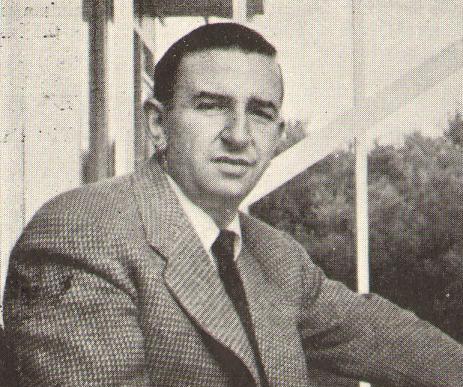 | |
| Douglas Diomedes Alexandra in the early 1950s |
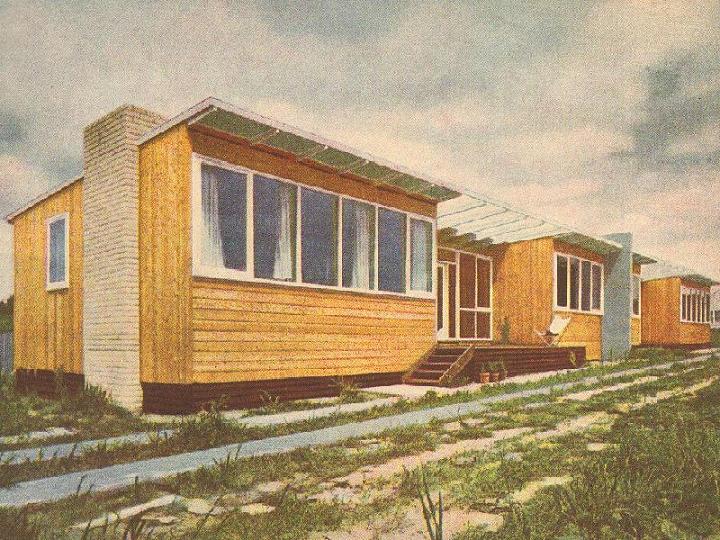 | |
| Maisonsettes for self, Burwood, by D D Alexandra (1951) |
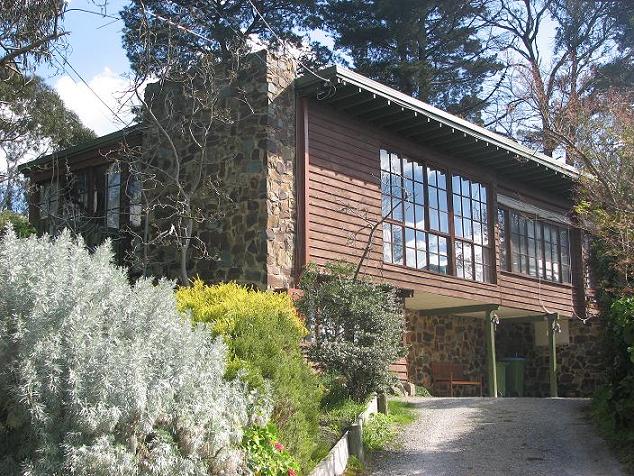 | |
| Kotzman House, Ringwood, by D D Alexandra (1952) (photograph by Simon Reeves, Built Heritage Pty Ltd) |
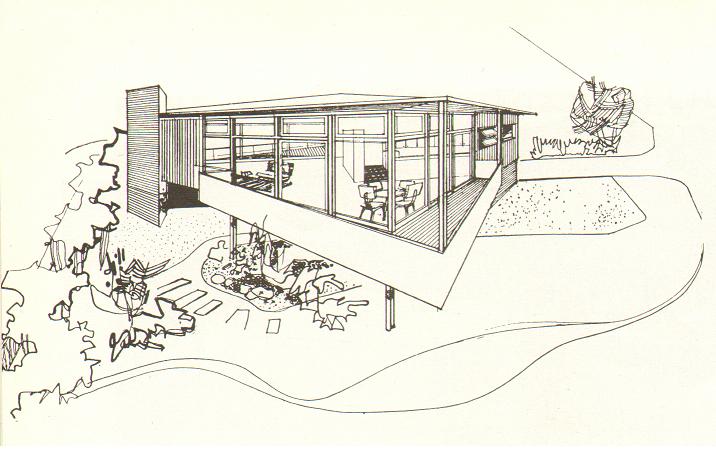 | |
| Scheme for unbuilt house on Beach Rd, Beaumaris (1955) |
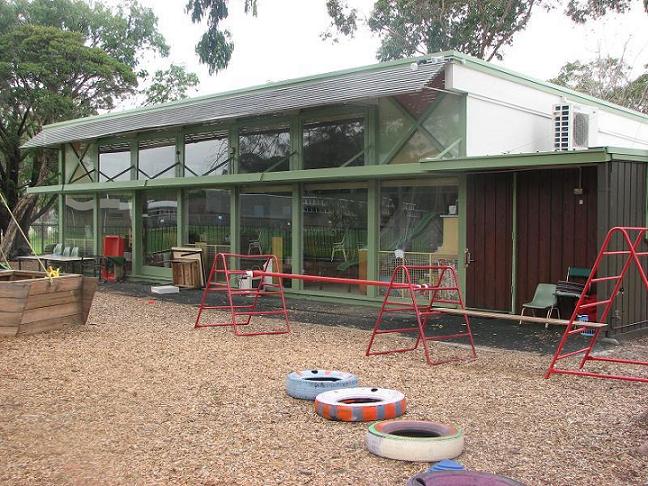 | |
| Jack & Jill Kindergarten, Beaumaris (1956) (photograph by Simon Reeves, Built Heritage Pty Ltd) |
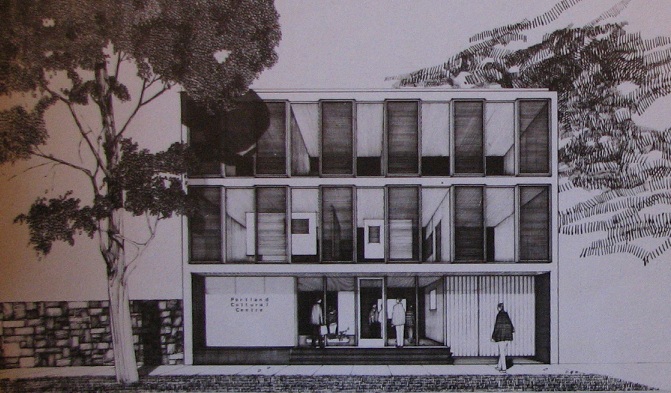 | |
| Portland Cultural Centre, Berg & Alexandra (c.1962) (source: Alexandra family collection, Melbourne) |
| Acknowledgement is made to Douglas Alexandra's son Nathan and daughter Madge, for providing corrections and further information, and also to Fiona Austin, for identifying additional projects. |
top
